- Home
- About us
- Blog
- Shop
- Brands
- ALL Brands List
- Analog Relax
- Antipodes Audio
- Audio Solutions
- AudioByte
- AudioCircle
- Audiomica Laboratory
- Canary Audio
- Canor Audio
- Chameleon Audio
- Dan D'agostino
- Eversolo
- Ferrum Audio
- Fezz Audio
- Glanz
- HiFiMAN
- HoloAudio
- LAB 12
- LAIV
- LampizatOr
- Magico
- Mega Acoustic
- Monrio Audio
- Origin Live
- Phasemation
- Pink Faun
- PLiXIR
- Qualiton
- Reed
- Remton
- Revival Audio
- Riviera Audio
- Rockna Audio
- Sbooster
- Shelter
- Sigma Acoustics
- Signal Projects
- SOtM Audio
- SPEC
- Takatsuki
- Takumi
- Tedeska
- Tellurium Q
- Trafomatic Audio
- Tsakiridis Devices
- Volumio
- Sales
- Second Hand Deals
- Account
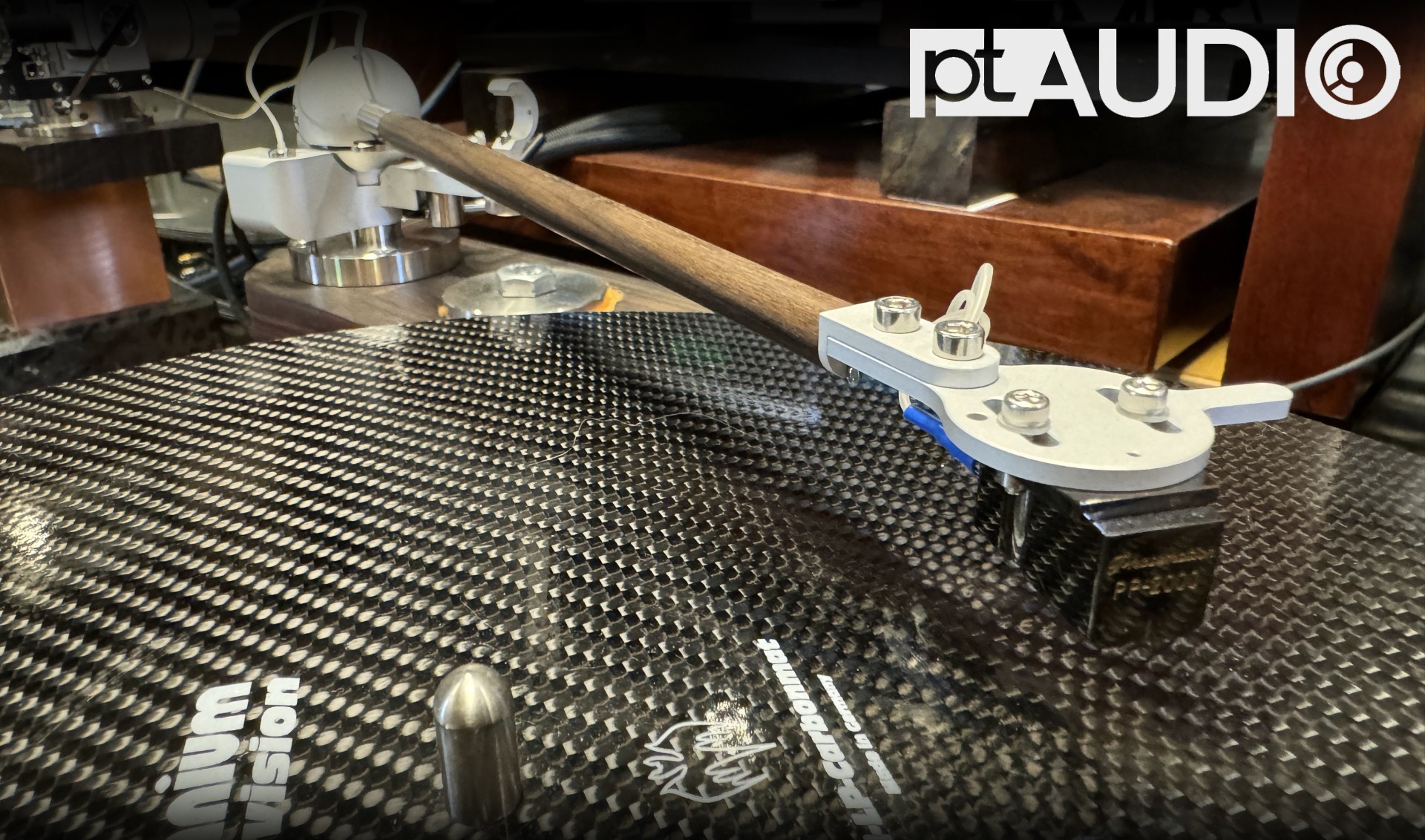
The Little Giant: Reed 2B Tonearm REVIEW by PTA
In the past 12 years, I’ve owned at least five Reed tonearms and have mounted many more for friends. Overall, I’ve handled over 50 Reed tonearms, giving me considerable experience with them. I’ve also rewired, repaired, or restored these tonearms for local dealers and customers so the actual number may be higher.
Reed, founded by Vidmantas Triukas in Lithuania in 2010, has consistently set a high standard for innovation in tonearm design. The number of innovations Reed has put out surpasses nearly all competitors in the market. The company’s first product, the Reed 2A, was introduced in the same year. This basic gimbal-pivoted tonearm featured a slender arm wand made from cedar or ebony. Its design was similar to other gimbal pivoted arms such as the Tri-Planar, Da Vinci Grandezza or Breuer, allowing for both horizontal movement—enabling the stylus to track across the grooves—and vertical movement, accommodating the stylus and cantilever’s up-and-down motion. However, the initial release exhibited a somewhat rougher finish and mechanical fitting, resembling a prototype more than a commercial product.
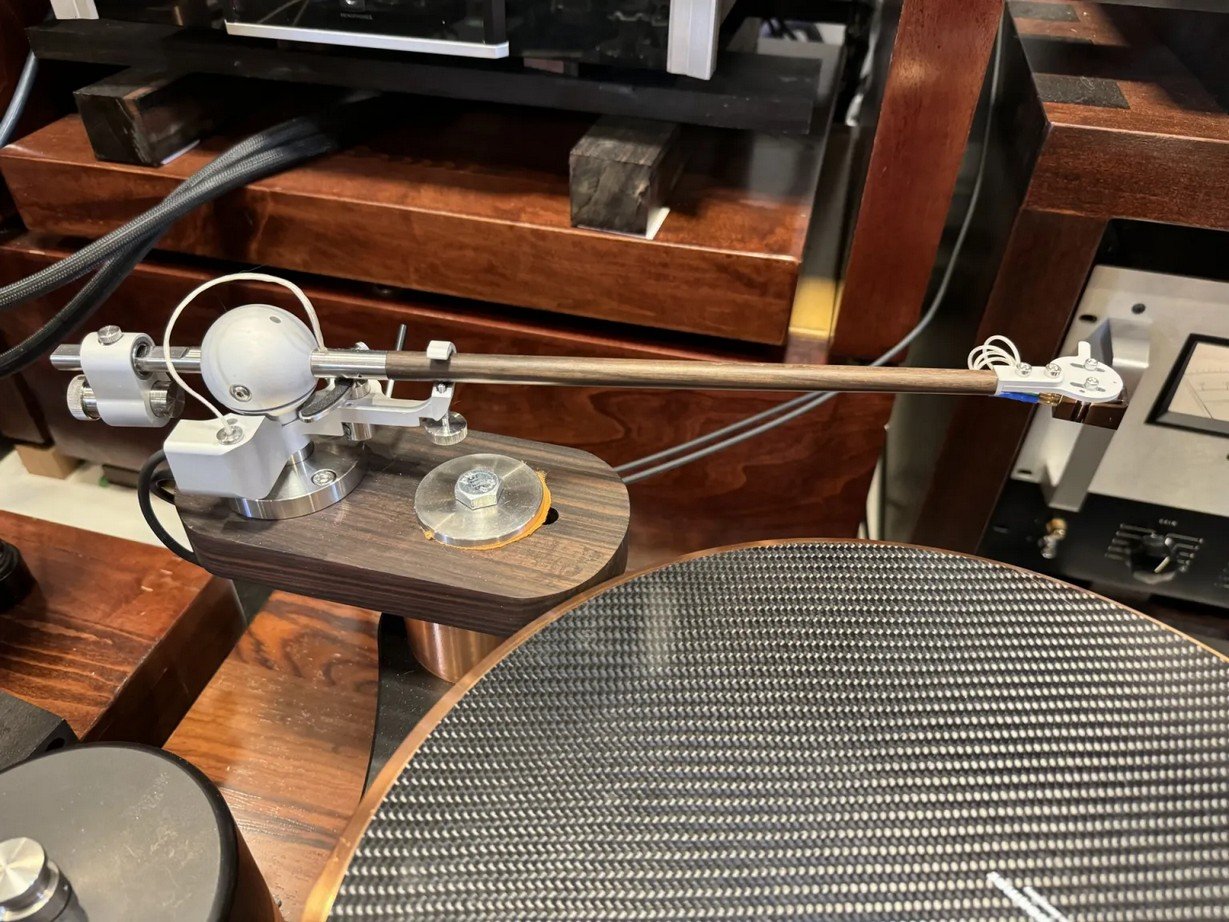
Reed quickly elevated its offerings with subsequent models. The 2A was enhanced to create the Reed 2P, which included an “On-the-Fly” VTA (Vertical Tracking Angle) adjustment mechanism, renowned for its ease of use. The quick-adjust lever on the 2P remains one of the most effective “On-The-Fly” VTA designs, allowing for smooth adjustments with a simple turn on the lever. Additionally, the new headshell enabled precise azimuth adjustments with a straightforward screw mechanism.
The Reed 2P’s finishing quality improved significantly compared to the earlier 2A, introducing new options such as gold, rhodium, and various matte finishes. It also came packaged in a sturdy wooden box, a marked upgrade from the previous flimsy packaging. The introduction of a laser beam to visually gauge the VTA level culminated in the release of the 3Q model.
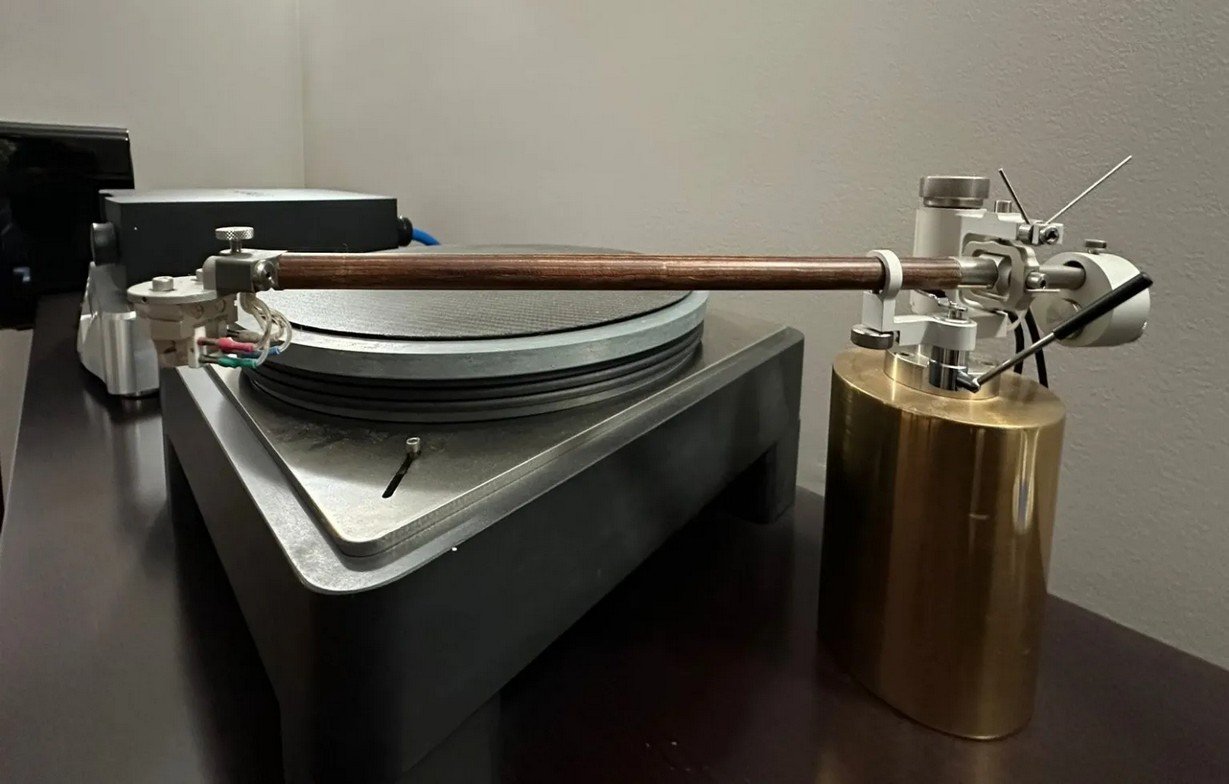
While many manufacturers have stagnated with only one or two designs over the years, Triukas’s commitment to innovation has continued unabated. Following the 2P and 3Q, the Reed 3P was launched and received an award from our publication.
As far as I know, the Reed 3P is the world’s first tonearm with an On-The-Fly azimuth adjustment capability.
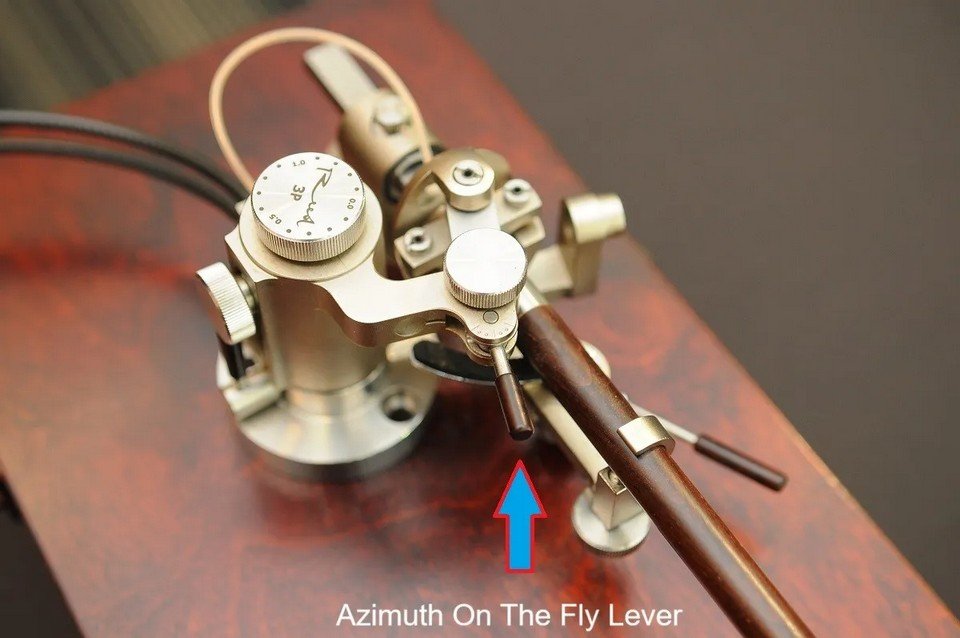
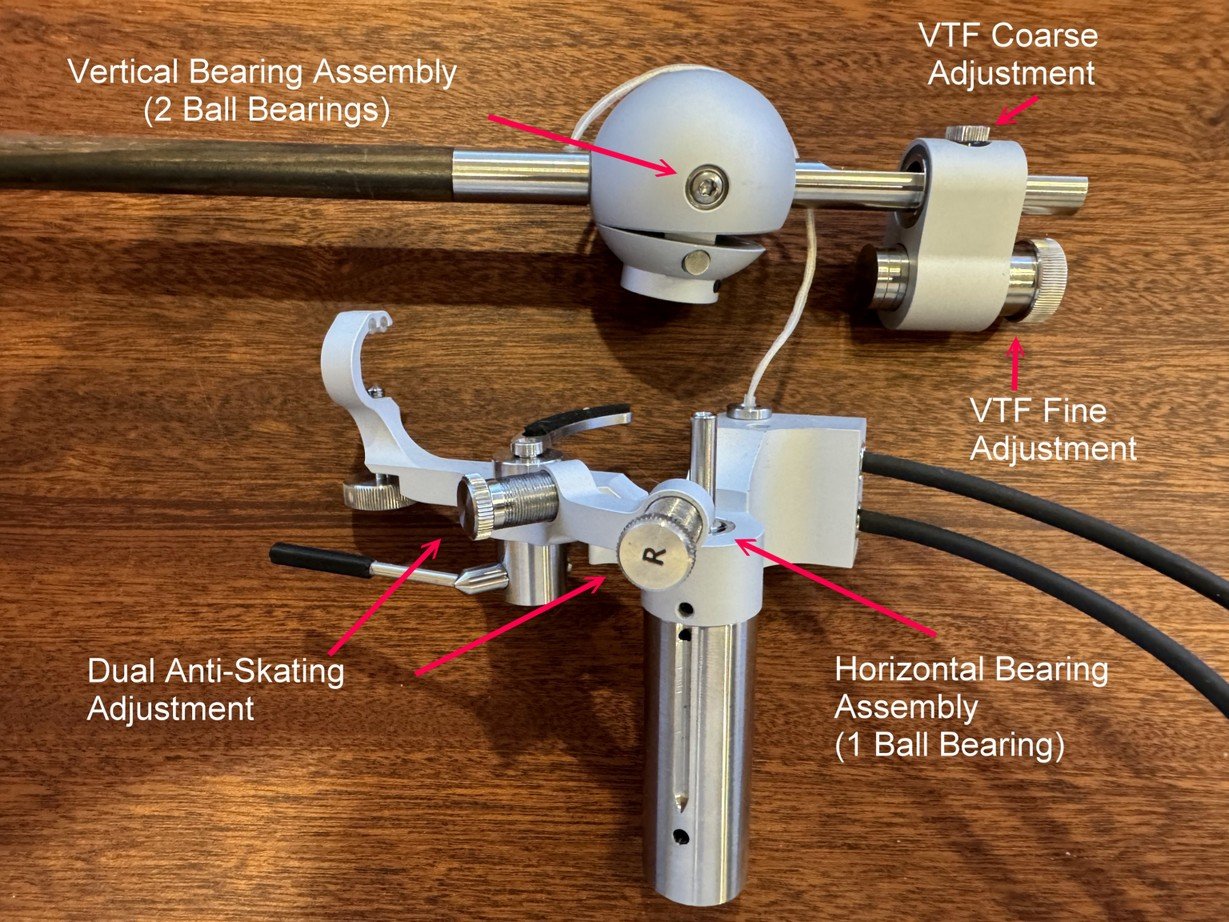
My AnalogMagik cartridge calibration software’s azimuth function was developed entirely based on the 3P tonearm, which offers easy adjustments for VTA, azimuth, and anti-skating. This feature allows for real-time monitoring of adjustments on-screen while using AnalogMagik’s functions. This made setting up and testing my software during the product’s development phase a breeze, as I literally used the feature nearly a thousand times.
My adventures with Reed products paused with the 3P. I relocated internationally and missed the opportunity to experience newer models like the Reed 5A and 5T (a pivoted tangential tonearm with minimal tracking errors) or the 2G (featuring interchangeable armwands). When Reed requested a review of the 2B and 5T models, I immediately jumped on the opportunity.
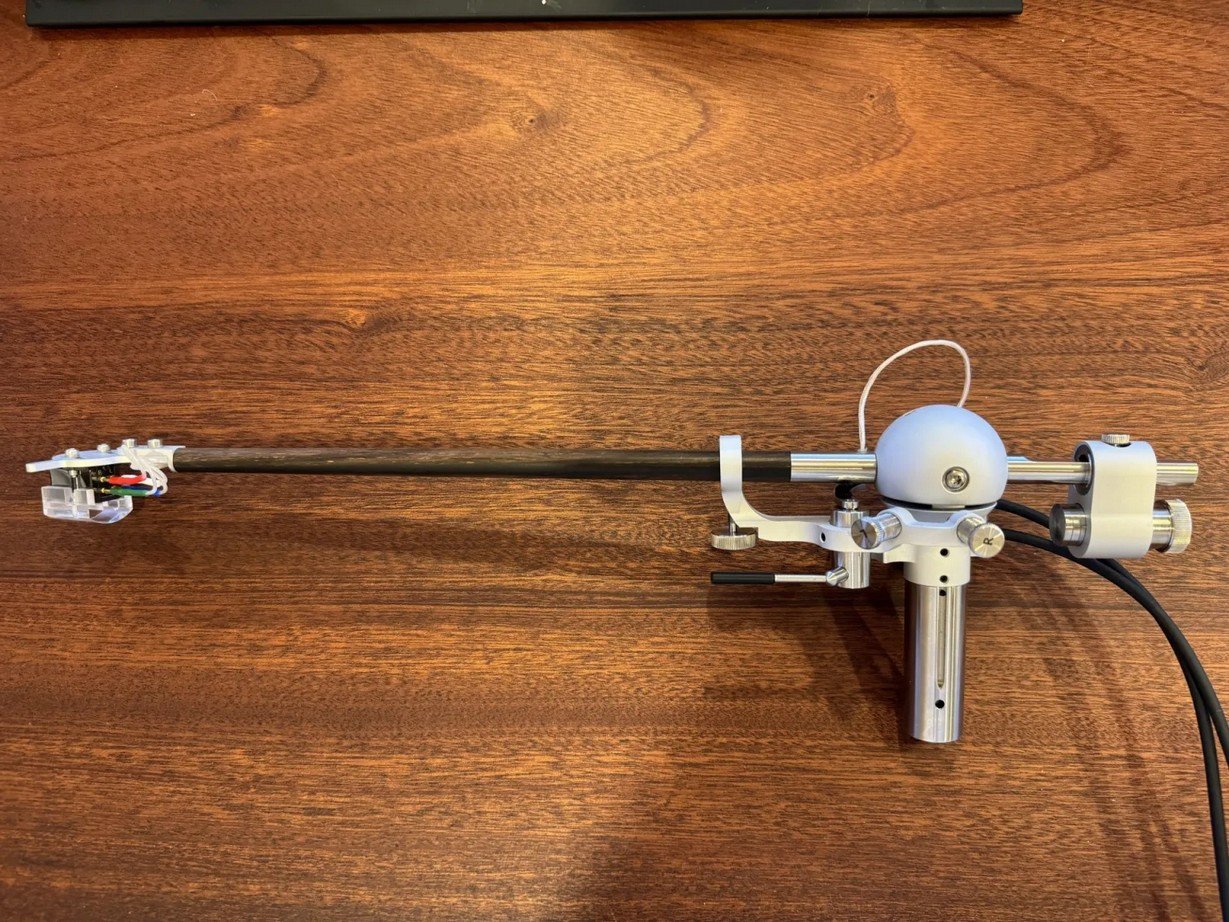
Inside the Reed 2B Tonearm
I apologize to Reed for the delay in this review, which has been postponed for nearly nine months due to personal circumstances. But I would also like to congratulate Reed because the 2B (an entry model) has proven itself to be able to sit with the big boys. At present, I have 12 of the world’s finest tonearms sitting on four turntables in my listening room. Any tonearm that fails to measure up to the others is promptly sold and replaced by the next contender.
I believe the Reed 2B is arguably my favorite tonearm in their lineup, and this review aims to highlight why it may be their finest offering, despite being priced at only €3,450 to start, with the basic “matte white” aluminum finish. The 12” version starts at €3,700, and it comes with various upgrade options such as higher-priced finishing, choice of arm wand materials, cryogenically treated copper or silver, direct wiring, and WBT Silver RCA plugs. A fully decked-out one will cost around €4,500. Still, it is the cheapest amongst all my other tonearms. [US price starts at $4,995–Ed.]
The Reed 2B is packaged in a cardboard box rather than the elegant wooden box used for previous models. However, for practical reasons, a cardboard box performs much better in terms of durability during transportation. The wooden box will need another layer of foam just to protect the box itself.
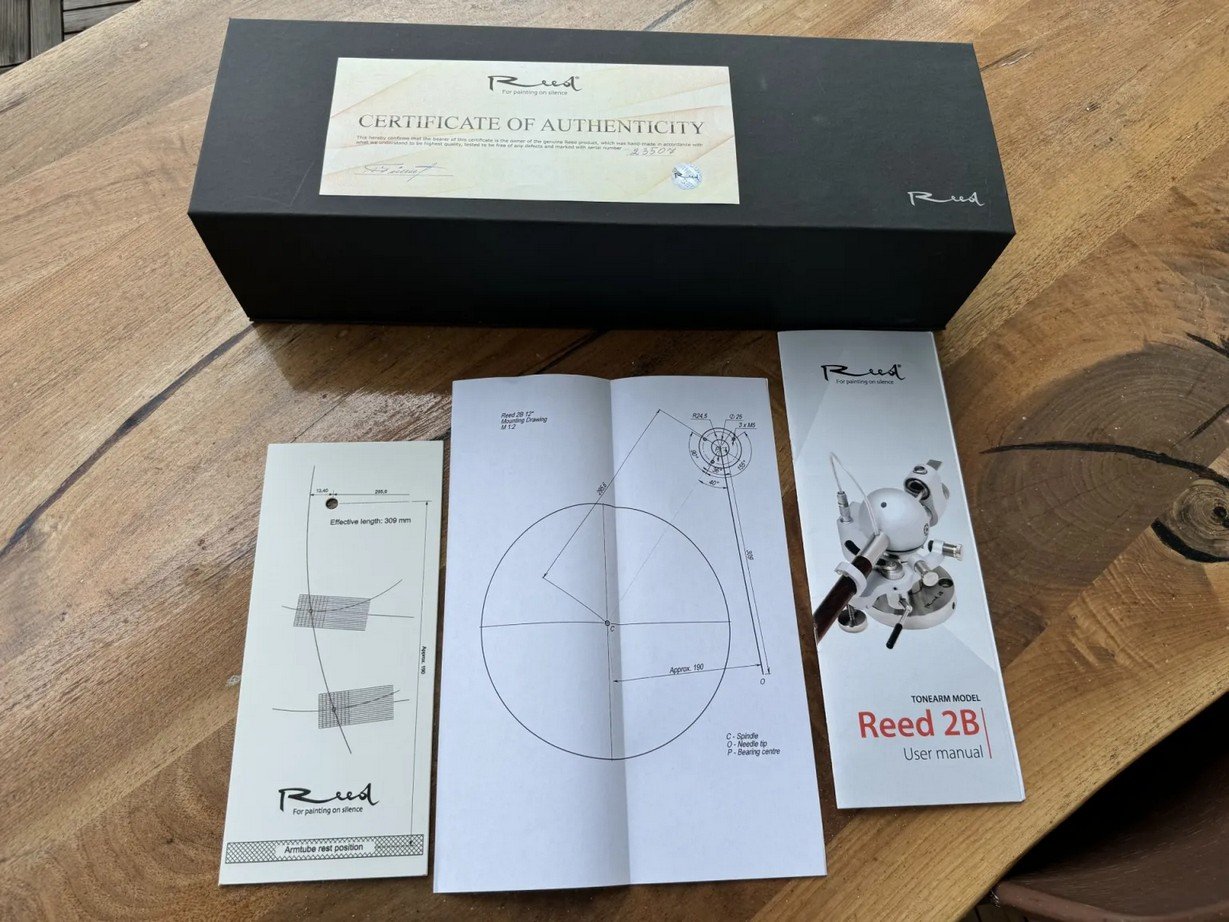
Gone are the days of DIY-ish computer-printed owner’s manuals. The Reed 2B comes nicely with a certificate, a detailed manual, and a somewhat plain vanilla mounting template. As my Cartridge Alignment and Turntable Setup Video explained, paper gridlines do not provide an optimal viewing angle, resulting in only semi-accurate alignments. For greater precision, the use of the SMARTractor is highly recommended.
The 2B comes with an acrylic mounting template that facilitates easy drilling of holes in the correct positions. Reed deserves commendation for this thoughtful inclusion, primarily since many high-end tonearms, such as the DaVinci Virtu, Schroder Reference, and Supreme-Analog, do not provide such a template, making installation significantly more challenging. It’s impressive that Reed offers this feature even with their entry-level model.
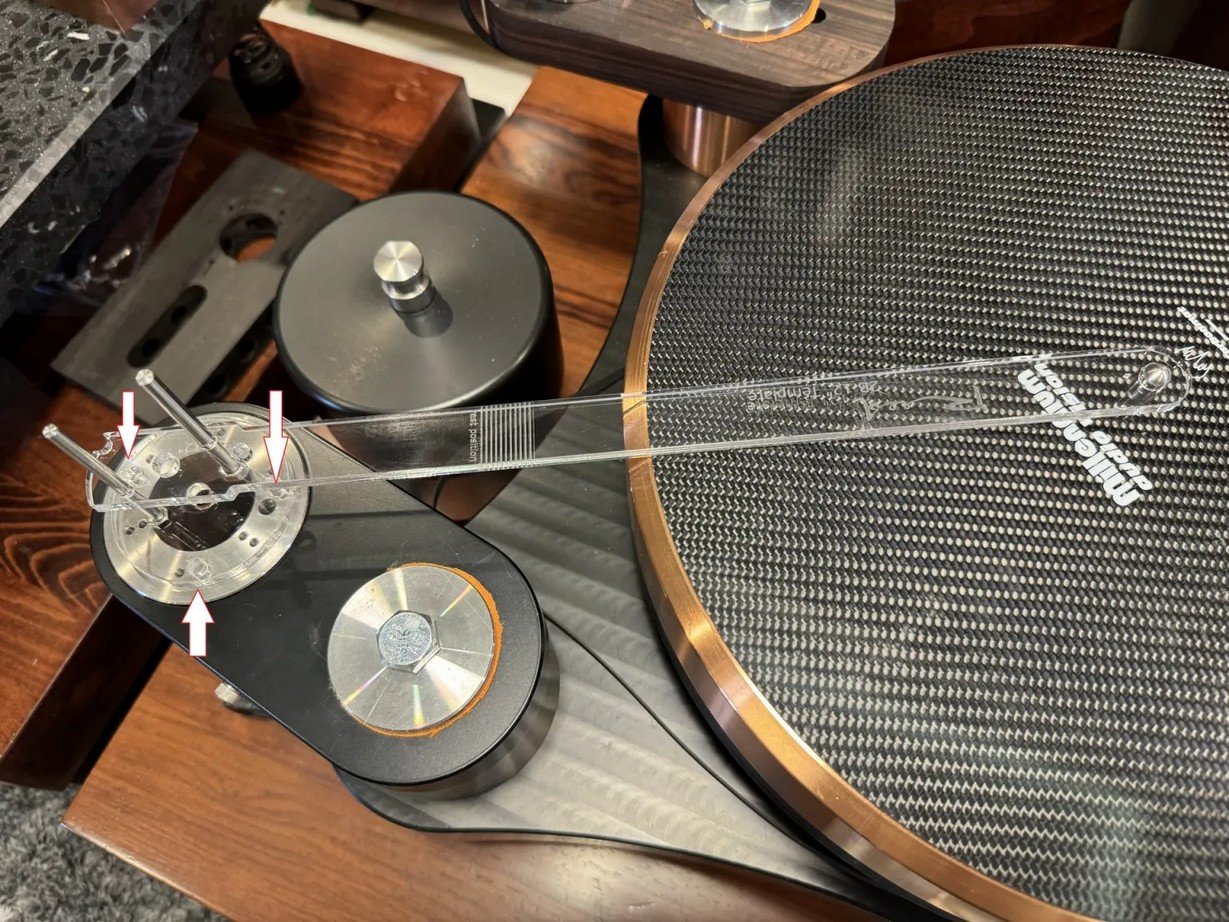
The main drawback of the tonearm is the lack of a pivot identifier (indicated by the red dot in the picture below). The hole slightly in front of the dot is for the azimuth adjustment set screw, not the pivot. Previous Reed models, such as the 2A, 3P, and 3Q, included a pivot marking for easy alignment with tools like the SMARTractor.
The dome-shaped top of the 2B means any surface markings would shift if the armwand isn’t perfectly horizontal. Without a pivot marking, accurately determining the SMARTractor’s pivot position requires removing the tonearm to locate the center of the mounting collar. The positioning pin, which points to the “Pivot Mark,” must be pointed to the exact center of the mounting collar. Once the spot has been identified, the SMARTractor and platter need to be taped down so the position doesn’t change. Once the tractor’s position is fixed, the arm can be reinstalled, and cartridge cantilever can be aligned with the gridlines and null point of the tractor.
The Reed 2B features a 4-point bearing design incorporating high-precision ceramic ball bearings. While ball bearings are generally built for high RPM rotation, a tonearm makes less than half a turn on the bearing. In this application, the breakdown torque (the energy needed to initiate movement) is more crucial than high-speed stability. Here, ceramic bearings have an edge over steel ones, as steel bearings require grease for smooth operation, whereas ceramic bearings do not need lubrication, resulting in significantly lower breakdown torque. Grease is only a good thing during high-speed rotation, but it increases breakdown torque and has a damping effect during low-speed turns.
Unlike gimbal pivot designs, which typically use two sets of bearings for both vertical and horizontal planes (such as the Reed 2A, Triplanar, Breuer Dynamic, Supreme Analog, DaVinci Virtu, and Grandezza), the 4-point system of the Reed 2B employs two bearings on the horizontal plane to control the vertical movement of the arm wand. The vertical plane also utilizes two bearings, but they are not sandwiched between the other two bearings. Both are below the “dome” structure, which houses the arm wand. Only the bearing at the top has vertical loading; the bottom bearing is hidden within the shaft and is used to stabilize the horizontal rotation axis.
This design is also seen in tonearms like the old Ortofon RMG309, the Schroder LT, and the Thomas Schick tonearm, so despite having different looks and materials, these three arms’ designs are very similar. If you include the four ball-bearing Gimbal Pivot designs, the FR64/66s, Glanz, Supreme Analog Tangenta, and DaVinci Virtu be added to the list. They all share the same family of sound as they all utilize multiple ball bearings to secure the arm’s movement and position.
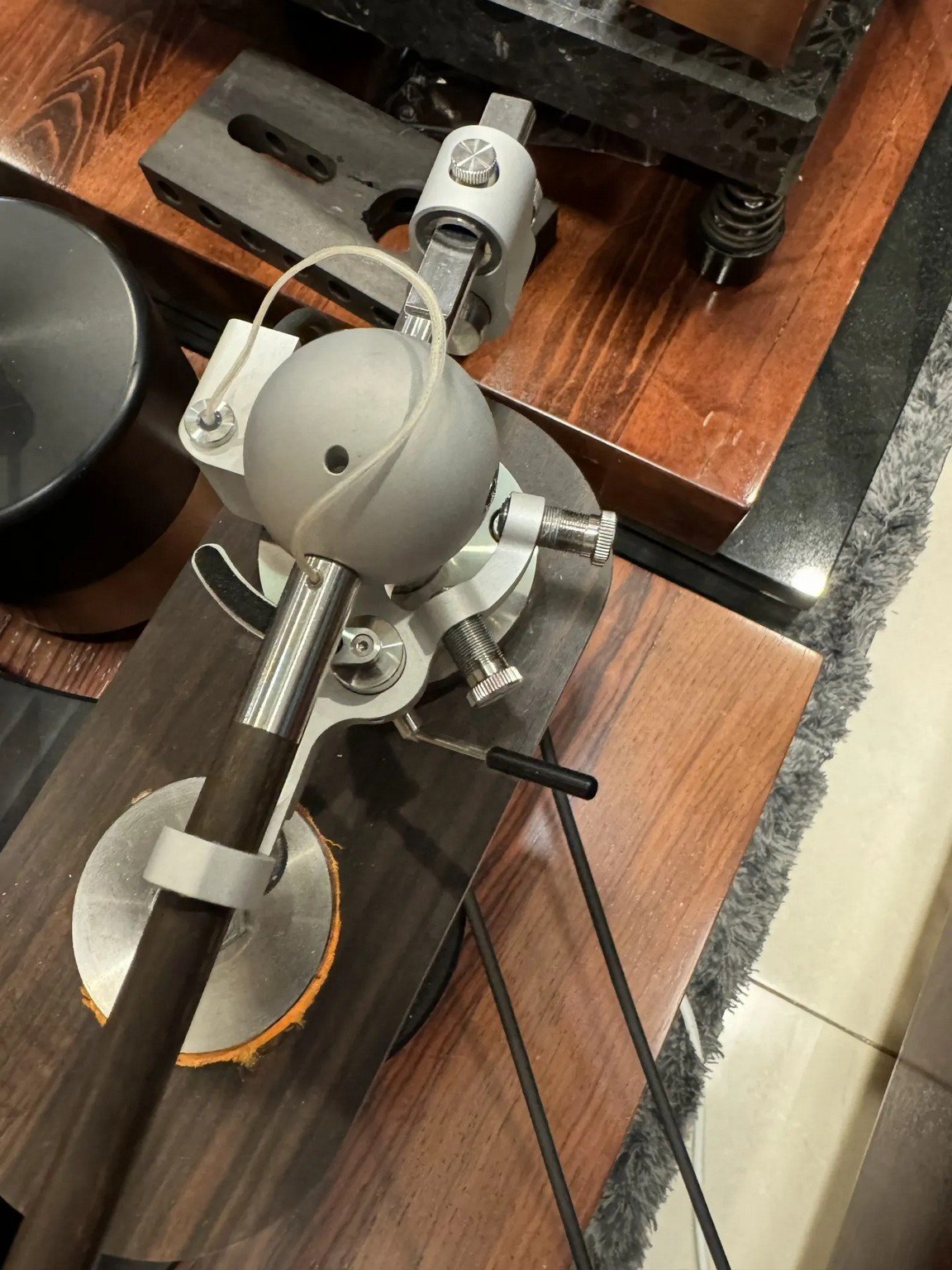
Unlike the 3P or 2P models, the 2B lacks the advanced quick adjustments for VTA or azimuth. Instead, it uses straightforward “set screw” adjustments. To adjust the azimuth, you loosen a set screw and manually rotate the arm wand on its axis, which does not allow for precise repeatability. The VTA adjustment is similar; you loosen a set screw on the mounting collar and turn the VTA adjustment screw clockwise or counterclockwise to raise or lower it. This mechanism is akin to the DaVinci Grandezza’s. VTA could arguably be adjusted on the fly, but I wouldn’t recommend it. One slip of the hand, and you can make the arm wand skid across the platter.
The Reed 2B truly excels in its anti-skating mechanism, which can be adjusted On-The-Fly. I prefer anti-skating systems that use magnetic repulsion instead of barrel weight designs, as the latter applies a constant force, while magnetic repulsion gradually increases the force. The force that causes the stylus to head towards the spindle is not constant over the LP surface.
The Reed website features a graph illustrating the relationship between the required anti-skating force and its application; notably, the force is critical at both the beginning and the end of a record. The Reed 2B is equipped with two separate magnet repulsion set screws, enabling fine-tuning of anti-skating precisely where it’s needed most on the LP surface – at the beginning of the record and the end.
Before you rush to buy the tonearm with the most “on-the-fly” adjustability for all parameters, it’s essential to reflect on whether you know how to properly adjust and measure VTA, azimuth, and anti-skating in the first place. It’s like owning a Ferrari without knowing how to shift gears. To avoid any conflict of interest, as I am the maker of AnalogMagik, I won’t delve into the scientific methods for setting these parameters, but I strongly recommend that audiophiles focus on honing their analog setup skills rather than spending money on things like cables or $15,000 cartridges. After all, accurate signal retrieval at the source is the most essential starting point; it will affect everything down the chain. Your $10k cable will not.
The second consideration is whether “on-the-fly” adjustability is really that important. Between convenience but with added complexity and connection and the effective energy transfer of minimalist design, I’ll choose the latter unless you’re developing software like me.
So there’s no On-The-Fly, so what? Spend another two hours, and the same results can be achieved with a bit more patience.
In my interview with Hamada San of Glanz Tonearm in Japan, he made a compelling statement: “Tonearm design is about energy transfer; the less complexity and the more direct contact, the better the energy transfer.” I’ve mounted thousands of tonearms throughout my lifetime—so many that I’ve lost count. This principle has proven accurate time and again. The more complex a tonearm’s design, the more mechanical joints and connections it incorporates. Each additional connection increases the risk of suboptimal fittings and wobbly parts. This added complexity often results in poorer energy transfer, leading to a dull-sounding tonearm. Ultimately, more is not necessarily better; the 2B is one of Reed’s simplest designs, yet it excels in performance.

Here Comes the Little Giant
The entire review of the 2B was conducted using a Phasemation PP-2000 cartridge, the same one Reed used for their anti-skating measurements. The turntable is a TW Raven AC, accompanied by a Schroder Reference arm with an Olympos cartridge (an exceptional combination!), and the Rossner & Sohn S1.2 paired with an Ana-Mighty Sound EMT cartridge. All three tonearms were connected to the Tenor P1 phono stage and shared the same turntable. To demonstrate that the 2B can compete with the best, I will focus on four sonic attributes: dynamics, extension and detail, tonal balance, and soundstage.
Pulling out Saint-Saëns’ “Symphony No. 3 in C Minor, Organ,” performed by Paul Puray and the Detroit Symphony Orchestra (Golden Imports SRI-75003), is like throwing the test subject into the deep end right from the start. This is one difficult LP to render well. I indulged in the classic audiophile move by focusing solely on the “audiophile” organ segment of the LP. Here, we’re assessing dynamic contrast and the solidity of the lower octaves, which I define as the strength, presence, and definition of the low frequencies.
In my setup, the undisputed champion of low frequency is the Supreme Analog Tangenta on the Micro Seiki RS5000 table; no other tonearm can match its texture and contrast—perhaps only matched the Kuzma 4 Point, and the Kuzma likely has the upper hand, but I do not own this arm. So, how did the 2B performed? It passed the test with flying colors, standing strong alongside the usual contenders known for their dynamism: the FR66s and Glanz MH-1200S, which are very similar in performance when it comes to dynamics.
The sound of the organ reached the lowest octave, delivering a bass texture you can hear and feel, radiating up your spine. The key here is the contrast between different bass notes, which are well-defined, rather than just a solid boom box of muffled sound. The rest of the orchestral instruments are also well-defined in the acoustic space amidst the complexity and overwhelmingly powerful organ. We found stability and solidity in the complexity and chaos of an orchestra playing alongside deep bass organ notes. To further prove its worth, it fared better than the Schroder Reference (a torsional suspension design) and the Primary Control tonearm (a unique uni-pivot & leaning ball bearing design); neither is primed for bottom-end solid dynamics. But it didn’t steal the crown from the Tangenta.
Before you assume the Schroder is a lesser tonearm than the Reed 2B, know that its torsional suspension design and uni-pivot excel in delivering frequency extension and minute details, resulting in an animated and expansive top-end ambience.
Stereo Sound Japan’s release of “Koji Tamaki’s Best” LP is a rarity that sold out completely before reaching the open market. They are now fetching 2-4x their initial price tag. This album features a rare live recording of Koji’s iconic song “Ikanaide,” beloved throughout Japan and Southeast Asia. His emotionally charged voice is projected against an orchestral backdrop, with actual echoes creating a vivid 3D surround sound experience through two-channel analog. This level of realism can only be achieved with an analog setup capable of revealing fine details and frequency extension, allowing you to feel the concert hall’s ambiance truly—it’s almost a religious experience.
There is also an unknown instrument that sounds like a “Ping” and a “Pong” embedded in the concert recording. It could very well have been a synthesizer-generated sound. But the distinct sound comes from far within the stage, far behind Koji’s voice. It is spooky and difficult to render.
While it’s difficult to quantify performance in exact percentages, the Reed 2B achieves about 85% of what the Schroder and Well Tempered Labs LTD can deliver. Other tonearms in my collection, such as the Supreme Analog, Grandezza, and Rossner & Sohn, fall slightly short of this mark in terms of frequency extension—not by much, but enough to note. That is to say, they are at the top spot but still on my list of top 12 arms, outperforming countless others.
It’s crucial to remember the disclaimer YMMV (Your Mileage May Vary), as the tonearm is just one of several limiting factors; the phono stage, cables, setup, and cartridge must all work in concert for optimal performance. So don’t shoot me if your findings appear different from mine. And your cartridge setup skills matter a lot, too.
What stands out is Reed 2B’s exceptional performance, closely rivaling Schroder and WTL LT, which matches or exceeds other tonearms in my arsenal. It rendered Koji’s emotionally charged voice with exquisite detail and hall echo, capturing a unique instrument with pinpoint precision. This level of performance requires tonearms with mechanical precision and direct energy transfer. Loose fittings and wobbly parts can hinder a tonearm’s ability to reproduce fine details, but rest assured; the Reed 2B performed remarkably well. Mechanically, there is nothing loose, and sonically, there are plenty of fine minute details!
Next: Tonality.
Tonality can encompass many aspects, but here, I am specifically referring to the expression of human voices and emotions. For this, I can think of no better choice than Ginamaria Hidalgo’s “Concierto para una sola Voz.” The late Kondo San of Kondo Audio Note Japan selected this piece as a benchmark for testing his equipment’s ability to convey deep human emotions.
While one might think conveying human voices and emotions is a small feat for any tonearm, the reality is quite the opposite. Achieving this is challenging because even slight deviations can make the sound feel “artificial,” leading to characteristics like “digital,” “hard,” “sibilant,” or simply “unreal.” Many tonearms can deliver lots of dynamics, but they sound hard with human voices, so you don’t see them in my collection. This is the most important criterion for me, as realism in human voices directly translates to proper tonal balance in other instruments. Balancing these aspects is crucial for a truly authentic listening experience,
The DaVinci Grandezza paired with the Kondo IO-M cartridge is the champion of tonal balance and realism for human voices. I have yet to try the IO-M on the Reed 2B, as I’m hesitant to disrupt the perfection of that combination. The Reed 2B passed the test with flying colors with the Phasemation PP-2000 cartridge, but it didn’t dethrone the Grandezza and IO-M again.
Hidalgo’s voice was so vivid and emotionally charged that it paused a dinner conversation, completely captivated by the music, drawing all the guests to gather in front of the system. What more evidence do you need? Should I mention the tonearms that fell short in this regard? Any performance that can pull guests away from a 1981 Château Canon served alongside Basque Rubia Gallega is a combination worth holding onto!
Last but not least is soundstaging. Like the rendering of fine inner details, effective sound- -staging relies on the tonearm’s mechanical precision and direct energy transfer. AnalogMagik’s ability to detect changes as you adjust parameters is a clear indicator of this capability. They bear a direct correlation to soundstage performance: VTA affects the height of the soundstage and instrument location; azimuth determines the sharpness of the sonic image (not volume or channel balance), and VTF significantly impacts image depth, solidity, and weight of objects within the acoustic space. An arm with poor energy transfer will cause the correlation to break apart, meaning changing VTF, VTA, or anti-skating produces minimal sonic changes or changes to numbers on a distortion analyzer.
You might wonder why I chose Joe Hisaishi Studio Ghibli’s “Wayo Piano Collection,” a solo piano recording rather than a multi-instrument recording, to test sound staging. The reason is that recreating the image of a piano in your listening room is much more challenging.
Consider the position of the grand piano: can you identify the direction of the fallboard? Where is the performer sitting? Are the high notes perceived closer to the listener, or do the lower octaves come forward? These nuances can significantly affect how accurately the soundstage is rendered. On top of that, your system’s speaker position relative to the room must be perfect in the first place. If your soundstage is bad to begin with, you don’t need a good tonearm because no good arm will give you any soundstage if the speaker position is off.
What stands out most is the Reed 2B’s sensitive response to adjustments in setup parameters—specifically VTF, VTA, azimuth, and anti-skating. This responsiveness reflects the arm’s ability to transfer energy with minimal loss, accurately recreating the instrument’s size, location, and weight in the acoustic space. In other words, it’s a world-class tonearm with precise mechanical precision.
I could identify the size, position, and direction of the piano and the performer on my setup and in my systems. Can you do the same with yours?
Want to know the piano’s position in this recording? Consider buying a copy to find out! The nuances of its placement will enhance your listening experience and deepen your understanding of the soundstage and how setup parameters change each aspect of the sound.
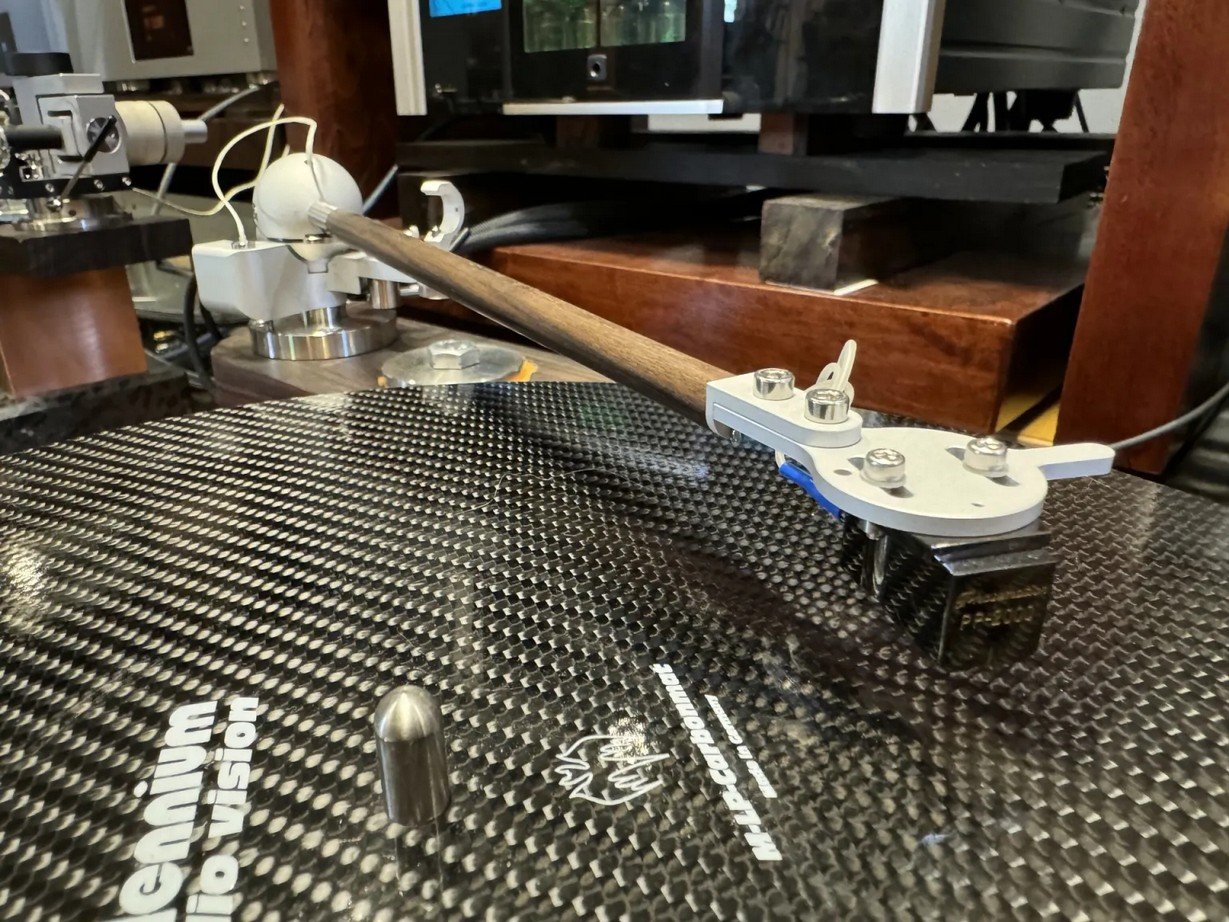
Conclusion
This will be brief: Just one word — BUY!
When the arm arrived on my desk, I despised it, thinking this entry-level model would be booted off. How could it measure up to the higher-priced Reed models I’ve owned before?
Whatever doubts you may have had about Reed’s tonearms, it’s time to reassess. The 2B sounds markedly different from the 2A, 2P, and 3P. Aside from the WTL LT arm, the Reed 2B has the lowest MSRP in my collection, yet it has rightfully earned its place among the heavyweights. I never expected it to stand tall beside the Schroder Reference, and it held its ground admirably.
Currently, the 2B is my favorite tonearm in the Reed lineup. This arm is here to stay, having just replaced another tonearm in my collection—one that cost twice as much as the Reed 2B. How does it compare to the more expensive Reed 5T? We’ll find out in my upcoming review. Check back in about six months because, unfortunately, that’s how long it will take!
Get the Reed 2B tonearm from Chameleon Audio.
Check out phasemation cartridges to pair it perfectly with.
